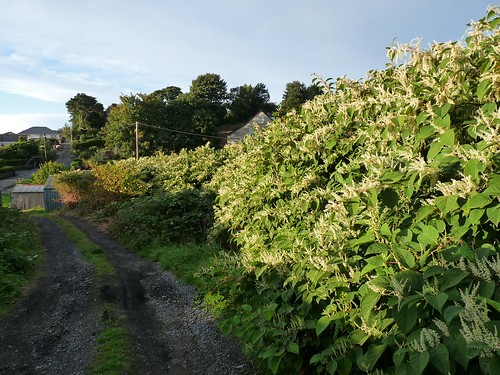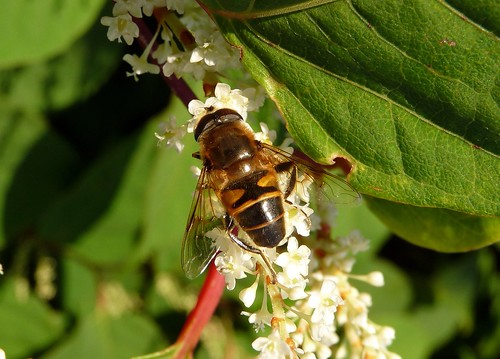You may have seen in the press recently rumours that Swansea has been targeted for an experiment to help find a natural means to combat the invasive species Japanese Knotweed. Although not confirmed this seems like an ideal location to start with as the county is slowly but surely being overrun with the stuff. The area to the back of my house is no different and is currently home to an impenetrable mass that reaches at least seven foot high.
Over the last week or so the Knotweed has come into flower. Not only has this made the plant almost attractive, but it has also proved an irresistible pull to the local communities of bees. Never one to pass up on an opportunity I thought I would attempt some macro photography as I currently have no bee pictures whatsoever. Once I had plucked up the courage to get close enough to the bees without the fear of being stung I was able to get some decent shots and quickly realised that there were several different species feeding away. Without any identification resource to hand I once again relied on the excellent folks over at the Wild About Britain forum to help me out.
The first species I captured was a Honey Bee (Apis Mellifera). With Honey Bees having a very bad time of it in terms of population crashes over the last decade it is great to see so many of them so close to home.
The second species turned out not to be a bee at all but instead an Eristalis Hoverfly.
There were a couple of other species that I unfortunately didn’t manage to photograph but it just goes to show the variety that can be found often right under our noses.








0 Comments